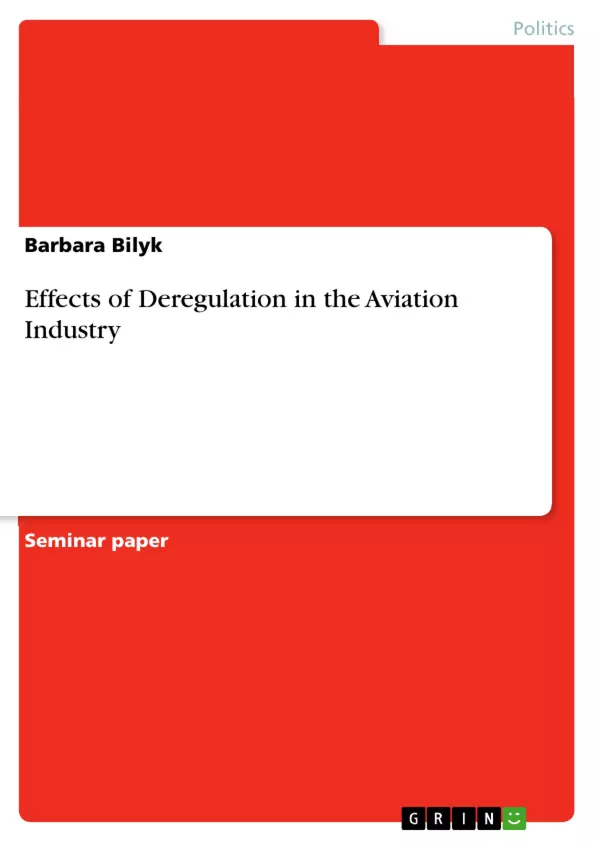Starting in the USA where deregulation of air transportation began in the late seventies, this trend was observable throughout Europe in the eighties and Australia at the beginning of the nineties. The major arguments for liberalisation were in general a reduction of capacity constraints and a simplified market access (Himpel & Lipp 2006, p.26). Constitutional for these ideas is the theory of contestable markets which assumes the efficiency of competition with a free market entry and market exit. Therefore deregulation processes aim at providing a better, safer and more efficient industry. However, Geoffrey Thomas (2008) among others points out that in reality the liberalisation of air transportation has caused predominantly negative outcomes which is why there should be a return to some degree of regulation. Based on Thomas’ train of thoughts, this research paper is aimed at critically evaluating the effects of liberalisation both on the aviation industry and on the consumer. The paper is therefore structured as follows: after revealing the limitations of the evaluation, positive effects of liberalisation in Europe, the United States and Australia are outlined which are then opposed to negative effects. Based on these findings, a conclusion is finally drawn.
Inhaltsverzeichnis (Table of Contents)
- Introduction
- Evaluation
- Positive Effects of Deregulation
- Europe
- United States
- Australia
- Negative Effects of Deregulation
- United States
- Australia
Zielsetzung und Themenschwerpunkte (Objectives and Key Themes)
This research paper critically evaluates the effects of deregulation on the aviation industry and consumers. It examines both positive and negative outcomes, considering the limitations of evaluation and comparing developments across Europe, the United States, and Australia.- The impact of deregulation on the aviation industry
- The effects of deregulation on consumers
- The limitations of evaluating deregulation
- The role of competition in a deregulated market
- The long-term consequences of deregulation
Zusammenfassung der Kapitel (Chapter Summaries)
The introduction sets the context of deregulation in the aviation industry, starting with its origins in the United States and its subsequent adoption in Europe and Australia. It highlights the theory of contestable markets and the intended benefits of deregulation, while acknowledging the potential for negative outcomes. The evaluation section acknowledges the challenges in assessing deregulation, specifically the absence of simultaneous regulated and deregulated environments and the difficulty in isolating the impact of deregulation from other factors. The section on positive effects explores the benefits of deregulation in Europe, the United States, and Australia. These benefits include increased competition, lower costs and prices, greater choice for passengers, improved industry efficiency, and a reduction in accident and fatality rates. The chapter on negative effects focuses on the challenges of competition in a deregulated market, including increased financial precariousness for airlines, market concentration, and the potential for dominant airlines to exert undue influence.Schlüsselwörter (Keywords)
Deregulation, aviation industry, air transportation, competition, consumer welfare, market concentration, hub-and-spoke, low-cost carriers, legacy airlines, financial performance, economic welfare, contestable markets, evaluation, methodological challenges.- Quote paper
- Barbara Bilyk (Author), 2009, Effects of Deregulation in the Aviation Industry, Munich, GRIN Verlag, https://www.grin.com/document/137523



